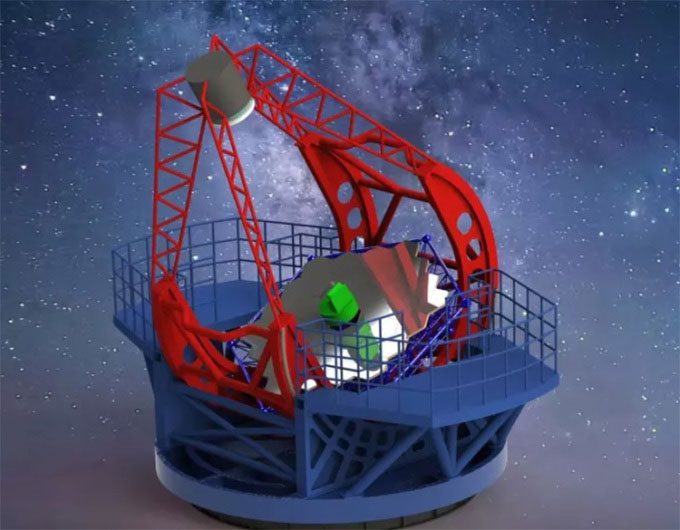The EAST Telescope is set to be built at an elevation of approximately 4,200m on the Tibetan Plateau, featuring a primary mirror with a diameter of 8m.
Peking University plans to construct the largest optical telescope in Asia, as reported by Interesting Engineering on December 29th. The project is named the Extended Aperture Segment Telescope (EAST) and is expected to significantly enhance China’s observational capabilities in optical astronomy.

Illustration of the EAST Telescope. (Photo: Peking University)
If everything goes according to plan, this new facility will become the first world-class optical telescope in the Eastern Hemisphere, capable of competing with existing facilities in the Western Hemisphere located in places such as Mauna Kea (Hawaii), Atacama (Chile), and the Canary Islands (off the northwest coast of Africa).
EAST is expected to be built on Saishiteng Mountain near the town of Lenghu, in Qinghai Province, on the Tibetan Plateau, at an elevation of approximately 4,200m. The telescope’s mirror will consist of 18 hexagonal segments, similar to the mirror in NASA’s James Webb Space Telescope. The mirror is projected to have a diameter of about 6m by 2024.
In the second phase of the project, an additional 18 hexagonal segments will be added around the main mirror, expanding the diameter to 8m by 2030. Experts estimate the project’s cost to be around 69 to 84 million USD.
In addition to EAST, China has several other large telescope projects underway. The country has developed the FAST telescope, the world’s largest single-dish radio telescope, and plans to launch a massive space telescope named Xuntian (巡天) in early 2023.
Xuntian will conduct extensive space surveys and is expected to begin scientific operations around 2024. Unlike NASA’s James Webb, Xuntian will be in a low Earth orbit allowing for maintenance. It will have an aperture of 2m and will be equipped with advanced detectors. Its size will be comparable to that of a bus, weighing over 10 tons.
China has also successfully tested the world’s first space telescope with a “lobster eye” design, capable of capturing X-ray images with unprecedented efficiency. Positioned at an altitude of 500 km above Earth, the Lobster Eye Imager for Astronomy (LEIA), weighing 53 kg, captures high-quality images of X-ray sources in the universe.


















































